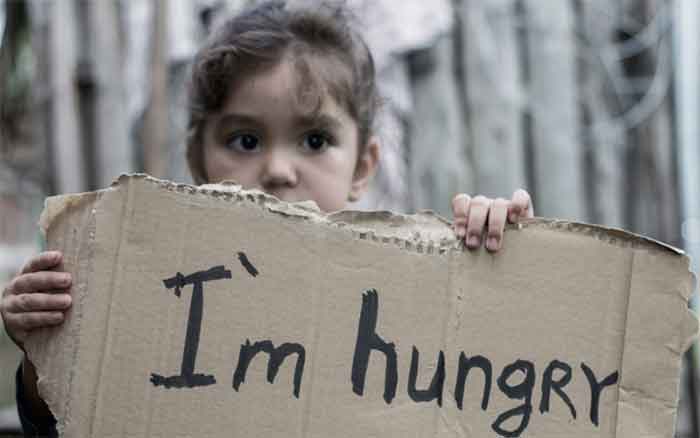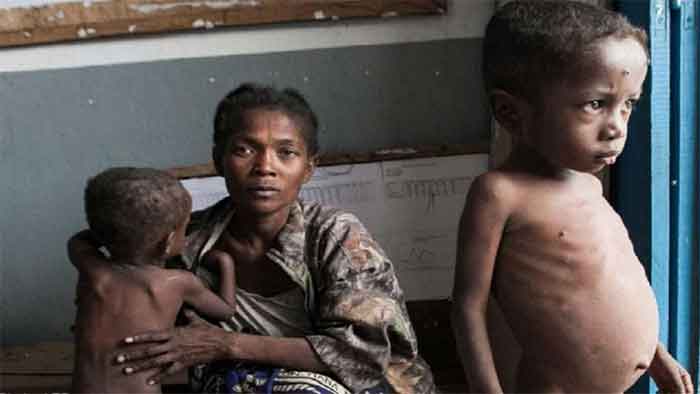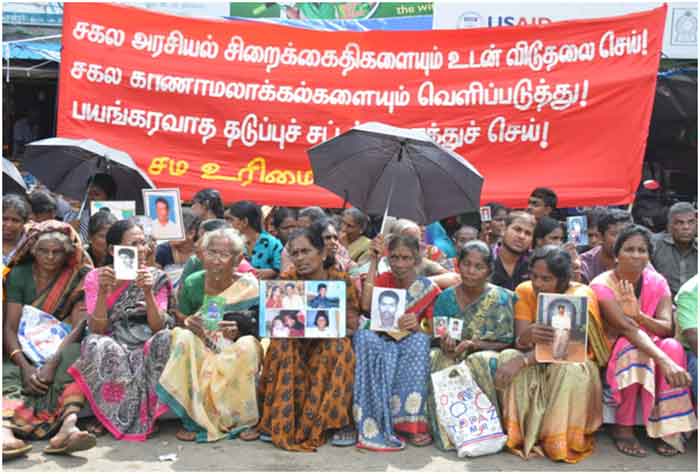The number of people suffering from malnutrition worldwide rose to 815 million in 2016, rising by 38 million from the year before. According to a new report co-signed by five United Nations agencies and charities, and made public by the Food and Agriculture Organisation of the UN (FAOUN) on Friday, this was the first such year-to-year increase in a century.
The development of science and technology, and their spread around the world in the form of gigantic increases in food production, have made possible a century-long reduction in the number suffering from hunger and malnutrition. In 2016, the world produced more than enough food to provide an adequate and nutritious diet to every human being on the planet.
But these gains are now increasingly offset by war and the impact of climate change, according to the UN report. Another factor—on which the UN report is largely silent—is the impact of mounting economic inequality, which means that in both comparatively wealthy and poor countries, many people are too poor to purchase the food that exists in abundance.

The five agencies involved in the study are the Food and Agriculture Organization, the World Health Organization, the International Fund for Agricultural Development, the World Food Programme, and UNICEF. As is typically the case in such reports, the language is deliberately restrained and the approach cautious and incremental, even when addressing what can only be described as a social catastrophe.
In 2016, for example, an estimated 155 million children younger than five were classified as “stunted,” too short for their age, because their physical development lagged significantly because of lack of food. Some 52 million children were considered undernourished, not heavy enough for their height. One-third of the population of eastern Africa, and one-fifth of the population of the entire continent, were undernourished. In Asia, 12 percent of the population were undernourished, mainly in South and Southeast Asia.
The report warns that significant progress in reducing malnutrition worldwide, from the level of 900 million people in the year 2000, is now in danger of being reversed. In just the last year, chronic undernourishment surged to an “extreme level” worldwide. Famine was declared in South Sudan in February. Yemen, northeast Nigeria, and Somalia teeter on the edge of famine.
The number of chronically undernourished people rose to 815 million in 2016—a number greater than the population of the entire European continent. Of that number, 489 million, 60 percent, live in countries affected by war or civil conflict.
The foreword to the report states that not only have conflicts “risen dramatically in number” over the past decade, but they have “become more complex and intractable in nature.” The residents of countries in conflict zones are almost two-and-a-half times more likely to be undernourished than those in other countries. In South Sudan, severe food insecurity afflicts around 4.9 million people—over 42 percent of the population.
In Yemen, 60 percent of the population—an estimated 17 million people—suffer from severe food insecurity. This number represents a 47 percent increase from June of 2015. Pediatric malnutrition has been “a serious problem for a long time” in Yemen, according to the report. However, acute undernutrition, or wasting, has risen sharply in the past three years. The report cites “the conflict-induced, economy-wide crisis that is affecting the entire population.”
War and internal conflict create food insecurity in myriad ways. One is through population displacement. According to the FAOUN report, the number of refugees and internally displaced persons (IDPs) has “increased significantly along with the greater number of conflicts,” doubling from 2007 to 2016 to a total of 64 million people.
One out of every 113 human beings is currently a refugee, an IDP, or seeking asylum. An estimated 70 million people worldwide are likely to suffer undernourishment as a result of displacement.
War also exacts heavy tolls on agriculture and food distribution systems, “from production, harvesting, processing and transport to input supply, financing and marketing,” states the report. In Iraq, for example, prior to the 2003 US invasion, the Nineveh and Salah-al Din districts produced a third of the country’s wheat and 40 percent of its barley. Yet by February 2016, 70-80 percent of Salah al-Din’s grain cultivations were damaged or destroyed; in Nineveh, which includes the city of Mosul, 32-68 percent of the land used for wheat cultivation had been either compromised or destroyed, as well as 43-57 percent of the land used to cultivate barley.
In Syria, where agriculture once thrived—and where many scientists believe it originated historically—six years of attempted regime change by the United States have devastated the country’s cultivation. Eighty-five percent of Syrians now live in poverty. An estimated 6.7 million faced acute food insecurity in 2016. Acute malnutrition—wasting—is currently seen at increased levels in most areas.
One of the most insidious ways that conflict drives undernourishment lies in “food … being used as a weapon of war.” The report mentions the use of trade blockades in South Sudan. It notably fails to mention the Saudi-led blockade against Yemen, where imported grains supply the bulk of the population’s nutrition.
Conflict is not the only source of undernourishment, as the FAOUN report makes clear. Climate extremes have led to sharp increases in food insecurity in Sub-Saharan Africa as well as Southwest and Southeast Asia.
In addition, as the World Socialist Website has reported in the past, diseases of malnutrition are once again on the rise in developed countries such as the United States and Great Britain. In these countries, it is not uncommon to find occurrences of morbid obesity alongside undernourishment in a single family. As wages stagnate and food prices continue to increase, many people can only afford heavily processed, starchy foods. Such products are more profitable for companies to supply, because they are less prone to spoilage and are therefore cheaper to transport and store.
This is a burgeoning health crisis, as the report points out: “food insecurity and poor nutrition during pregnancy and childhood are associated with metabolic adaptations that increase the risk of obesity and associated non-communicable chronic diseases in adulthood.”
As the report’s authors say, the results of the UN’s assessments have “set off alarm bells we cannot afford to ignore.” However, while the UN rightly points out that conflict engenders undernourishment, it blatantly omits the role that imperialism plays in these conflicts. It classifies the conflicts in South Sudan and Syria as internal conflicts, when, in fact, the chaos in both countries has been directly caused by the United States, its allies, and its proxies. It even fails to mention the United States at all in its assessment of Iraq, invaded, laid waste to and occupied by US military forces from 2003 to 2011, and still a battleground.
The report’s authors suppress any mention of the Saudi-led coalition’s attacks upon Yemen, as well as US complicity in those attacks; in many instances, the coalition has blocked humanitarian aid organizations from entering the country, and it has bombed numerous hospitals and mobile clinics. But the report details the same crimes at some length when perpetrated by “warring factions” in South Sudan.
Largely ignored are the long-range, ever more obvious effects of manmade climate change. No critique is leveled against the corrosive social effects of the profit motive, which is responsible for both climate change and the dearth of affordable nutrition in developed countries.
The worldwide capitalist crisis threatens new, more lethal wars. The imperialist nations cannot address food insecurity, not only because they have caused it with their militarism and unchecked industrial pollution, but because they are fundamentally incapable of solving their own contradictions. Even as this report was released, unprecedentedly violent hurricanes submerged entire cities, displaced thousands, and claimed lives throughout the American Gulf Coast and the Caribbean.
Global hunger can only be eradicated by putting an end to the contradictions of capitalism and replacing it with an economic system based upon social need. The UN may sound the alarm bell about widespread undernourishment, but only the struggle of a united international working class can put an end to it.
Originally published in WSWS.org















































